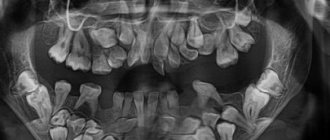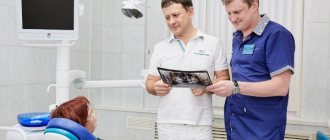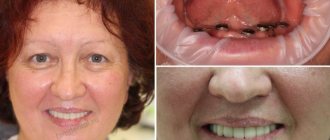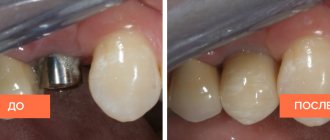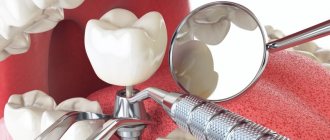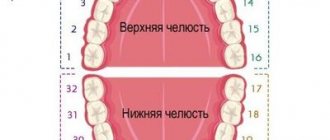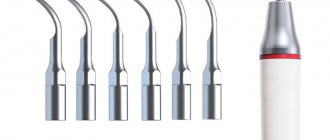Impro ICX Semados Ankylos Xive
Russian patients like implants from Germany for their long service life. Many of them come with a lifetime warranty. Product quality is confirmed by certificates of the European Union and the ISO 13485 quality system for medical products.
Implantologists appreciate them because the system can be selected for any clinical case. In addition, all implantation protocols are carefully worked out, which reduces complications to a minimum.
Among the countries that produce implants, Germany occupies one of the leading places, primarily because manufacturers rely on a strong scientific base. Scientists are developing new types of surfaces, threads, and shapes of implants to increase the survival rate and accelerate osseointegration. Reputable medical journals regularly publish research data that confirms a high percentage of successful engraftment.
There are several types of German implants on the Russian dental services market.
Impro
The German Impro implant system was created to satisfy all the needs of dentists and patients. More than 50 models, including super short ones, 7mm. Various models of abutments with which you can use any type of fixation: cement, screw, magnetic, cement-screw.
The main advantage of this company’s systems is the ability to install implants simultaneously with sinus lifting.
These products have:
- the innovative SuperH surface promotes osseointegration
; - the combination of micro and macro threads tightens the tissue
already during implantation; - a cone-shaped head with micro-thread allows the pin to be used even in thin bone
(1-2 mm); - the variety of abutments opens up wide possibilities for prosthetics
; - The pin design promotes even load distribution
.
Impro implants can be installed immediately after tooth extraction, without waiting for the socket to heal.
Impro implants are German quality at a price in the middle segment.
The disadvantages include the fact that the company does not use the sandblasting method to increase primary stability. The surface of the implants is not as rough as premium brands. It is not enriched with phosphorus or fluorine. The degree of surface hydrophilicity is average. On the other hand, a study of the surface cleanliness of implants from this brand notes the absolute absence of microflora and the extremely precise geometry of the products
[1].
ZIRCONIUM IMPLANTS CONTRAINDICATIONS FOR USE
There are few contraindications for the use of zirconium implants:
- oncological diseases of the jaw bone
- use of pure bisphosphonate drugs
- diabetes mellitus in an uncompensated state with a sugar level above 10.
- Stage III osteoporosis.
- osteomyelitis of the jaw
- periostitis of the jaw
- mental illness
IN THE PHOTO: Correspondence between the shape of the root of your own tooth and the shape of the zirconium implant.
ICX
ICX implants are not so widely known in Russia. However, the brand ranks 4th among implant manufacturers in Germany. And supplies products to 40 countries.
Why dentists recommend ICX:
- The range is small, but it contains implants for most clinical cases
. Products are offered for anterior and molar teeth, and pins for use in cases of significant bone loss and thin alveolar ridges. - Active Liquid surface accelerates osseointegration
by 2 times due to increased hydrophilicity. - The beveled, roughened shoulder of the implant provides primary stability
in the alveolar ridge and rapid growth of soft tissue. - Each pin uses 3 types of threads: self-tapping apical, condensation in the middle part and microthread in the neck. This combination compacts the bone tissue during installation, provides stability
during the healing period, and
distributes pressure evenly
during immediate loading.
Disadvantages of the system: the production of only 5 models limits the scope of application.
MANUFACTURERS OF ZIRCONIUM IMPLANTS
The global dental market is quite extensive. Several well-known implant manufacturers have begun making them from zirconium.
Currently, the following types of zirconium implants are known in the world:
- Nobel Bioker
- Straumann
- Bredent.
The German company BREDENT is a leader in the development of innovative products in dentistry. High German quality and modern developments in dentistry make this implant unsurpassed among its analogues.
The only zirconium implants approved for use in the Russian Federation are BREDENT implants. They successfully passed clinical trials and received a registration certificate from Roszdravnadzor.
While obtaining permission for use in Russia, BREDENT implants underwent the most stringent toxicological and clinical tests, which showed that these implants are ideal for eliminating dental defects in any clinical cases.
Semados
Semado – German-made implants from Bego
. A distinctive feature of Bego products is their focus on digital technologies. This company was the first to use CAD/CAM technology, and is now actively distributing its own Varseo 3D printer to solve dental problems. Semados implants are recognized as the best in Europe in the “Production Safety” category.
Scientific studies have confirmed that the survival rate
Semados implants remain at the same level
5 and 9 years
[2] after surgery.
The model range is limited, but there are implants for one-stage and two-stage protocols, mini implants and pins for loose bone tissue.
The focus on digital technologies limits the use of German Semados implants in Russia. Only in large cities there are clinics that have high-tech equipment to work with this system.
The following 2 brands entered Russian dental practice like German ones. They continue to be called that, although technically they have already become international. As a result of several mergers, Ankylos and Xive implants are now manufactured by Dentsply Sirona.
PREMIUM DENTAL IMPLANTATION WITH ZIRCONIUM IMPLANTS BREDENT (GERMANY)
Zirconium implants are a modern development of European dental research centers in the field of safe dental implantation.
DENTAL CLINIC "BIONIC DENTIS" IS THE ONLY OFFICIAL CENTER FOR INSTALLING ZIRCONIUM IMPLANTS OF THE GERMAN MANUFACTURER BREDENT IN THE TERRITORY OF THE RF AND CIS COUNTRIES.
Our clinic, like many premium clinics in Europe and the USA, uses the method of installing zirconium implants.
We were the first in Russia to begin installing these structures and have accumulated extensive clinical experience, which helps us solve the most difficult problems that patients pose to us.
Ankylos
Back in 1985, Ankylosis implants made a small revolution in implantology. The abutment (base for the crown) and the implant itself were inserted into each other, forming a single system. This design has no gaps, which means pathogenic microbes cannot penetrate inside. The main idea remained the brand’s calling card, but was supplemented by new developments - the TissueCare concept.
Ankylos manufacturers decided to pay special attention to soft fabrics. All innovations are aimed at ensuring that implantation stimulates them to grow:
- The post design combined with the concave abutment provides ideal space for bone and soft tissue growth and preservation
. - The surface that has been sandblasted and acid etched increases the adhesion area. This accelerates osseointegration
. - Special thread facilitates installation
and
maintains alveolar ridge height
/
The survival rate of German Ankylos dental implants is 97%
[3] 5 years after installation.
to the cons
The brand's products include the need for special training, relatively high cost, as well as model limitations in the combination of length and diameter. for example, an implant with the largest diameter of 7mm does not have a model longer than 14mm. This somewhat limits installation options.
HOW PROSTHETICS ARE CARRIED OUT WITH ZIRCONIUM IMPLANTS
Prosthetics with BREDENT zirconium implants require high precision and care from the dentist. How this technique was developed in Germany and the Germans demand very strict fulfillment of the requirements.
After installation, a plastic impression cap is placed on the implant.
This device allows you to make a very clear impression and accurately produce a working model.
There are 2 principles of prosthetics on BREDENT zirconium implants
- Analog prosthetics. With this technique, the dentist takes impressions of the teeth, and the dental technician makes a plaster model on which the crown is made.
- Digital prosthetics. This technique assumes that the prosthetist will scan the oral cavity and the installed implant using a special No. D camera. As a result of scanning, a virtual model is obtained in a computer program, on the basis of which the crown is modeled. The crown is made by cutting it out of a zirconium blank using a special robot - a milling cutter. Such crowns have very high precision and last longer.
Xive
German Xive dental implants have a high level of survival rate
[4] in its product class. The special thread design provides primary stability even with significant bone loss.
Advantages:
- Can be used for any type of prosthetics
. Single pins, bridges or a full jaw – any type of orthopedic treatment is available. - Suitable for immediate implantation
. Implantation into the socket of an extracted tooth prevents bone loss and allows you to immediately use temporary dentures. - Maintains gum contour
. The smooth neck of the implant and the special design of the abutment give the gum a natural appearance.
The thread on the pin becomes denser in the cortical part. This guarantees optimal stability. Varieties of abutments help you choose the right one for temporary and permanent crowns.
The disadvantages of the system include the fact that it is not so well known in the regions. In the outback it is difficult to find a dentistry that offers the installation of implants of this brand.
ZIRCONIUM IMPLANTS, ADVANTAGES OF USE
In clinical practice in dental implantation, doctors encounter some problems that sometimes do not allow them to achieve high results in the rehabilitation of patients with partial and complete loss of teeth.
European research centers have been constantly working to improve the materials and structure of dental implants.
One of the most important achievements in modern medicine is the creation of zirconium implants.
Problems faced by implantologists and their patients solved thanks to the use of zirconium implants:
- An allergic reaction to titanium was found in 26 percent of patients. It is clinically proven and diagnosed using the Titanium Tolerance Test. Previously, such patients were denied implantation, but with the use of medical zirconium for the manufacture of implants, this problem was completely solved. An allergic reaction to zirconium has not yet been recorded in more than one patient.
- contamination of the internal space of the implant. Inside the implant there is a small recess in which a thread is cut. Due to this thread, an abutment is attached to the implant. However, multiple studies have shown that the internal cavity in the implant is always infected and is an excellent space for the reproduction and growth of pathogenic bacteria, which lead to implant rejection. Zirconium implants are monolithic, that is, the implant and abutment are manufactured from one block of zirconium. Thanks to this manufacturing method, there is no cavity in the implant, which means there is no colony of bacteria and no possibility of inflammation.
- poor stability of the implant-abutment connection. In titanium implants, the abutment and implant are 2 separate structures that are connected by a screw. When chewing movements in the oral cavity, the screw is constantly under stress or overload. Over time, the screw weakens the fixation of the abutment to the implant and the connection becomes loose. As a result, the crown falls off the implant. A frequent complication in prosthetics on implants is a fracture of the fixation pin; under high load, the screw fixing the abutment to the implant breaks into 2 parts. The lower part jams in the implant, blocking the thread. In 85 percent of cases, such a screw fragment cannot be removed and the implant has to be removed and a new one installed. This results in financial costs and stress for the patient. Due to the fact that the zirconium implant is a monolithic implant/abutment structure, it has a reinforcement zone in the place where it experiences overload. The monolithic structure is 800 percent stronger than screw-fastened parts, providing unsurpassed strength and durability.
- violation of the aesthetics of soft tissues due to the transillumination of a dark implant. This implant is dark gray in color. In cases where the patient has thin gum tissue, such an implant will be visible through it and will affect the aesthetics. The zirconium implant is white, it is not translucent and looks perfect in the oral cavity.
- the problem of gum recession and implant exposure. Over time, the bone tissue of a titanium or zirconium implant begins to settle. However, the implant is firmly anchored in the bone. In the case of a titanium implant, if such a problem occurs, the implant should be removed and replaced with a new one. In the case of a zirconium implant, this problem is simply solved without removing the implant. It is enough to grind off the threads on the protruding part of the implant and polish it. After which only a new crown is installed, and the implant continues to serve for many, many years.
- the problem of penetration of microbes due to the lack of connection between the gum and the neck of the implant. An important feature of your own tooth is that the gum tissue adheres to its neck, preventing the penetration of mircobs from the oral cavity directly to the jaw bone. When a tooth is lost and a titanium implant is installed, tissue tissue cannot stick to the metal neck of the implant, and microbes pass under the gum without hindrance. In the case of zirconium implants, the connection between the gum and the zirconium neck is much tighter. Of course, it is inferior in strength to the connection between the gum and the neck of a natural tooth, but it is many times superior to such a connection between the gum and metal. Thanks to the use of zirconium in implantation, the patient’s gums look healthy and indistinguishable from the gums of their own teeth.
BIO CONCEPT OF IMPLANTATION IS A WORLD TREND
Biological dental implantation is an internationally recognized trend:
- We do not injure the patient’s own tissues
- We do not introduce foreign metal implants
- We follow natural principles of prosthetics and implantation
ZIRCONIUM IMPLANTS COST
Features of manufacturing and installation of zirconium implants determine their higher cost.
The cost of zirconium implants in Moscow ranges from 110,000 to 160,000 rubles per unit.
Our clinic, thanks to direct cooperation with the implant manufacturer BREDENT, offers its patients the best prices for using this system.
PRICES FOR ZIRCONIUM IMPLANTS IN 2022
Prices for zirconium implants in 2022 highly depend on:
- level of the clinic you contacted.
- the level of professionalism of the implantologist who will perform implantation.
- the crown material from which it will be made.
- the need for bone grafting and bone augmentation, sinus lifting.
- the need for plastic surgery or gum grafting.
- the need and difficulty of removing a broken or cracked tooth and replacing it with an implant.
Prices for zirconium implants are slightly higher than for titanium ones. However, this is a qualitatively different level of dentistry, which has a high cost and requires maximum professionalism from the doctor.
REVIEWS OF PATIENTS WHO HAVE INSTALLED ZIRCONIUM IMPLANTS
Patient reviews of zirconium implants are only positive. Over 5 years of practice, we have not received more than one negative review from patients about this design.
According to the results of research on the Internet and collection of statistics, in their reviews of zirconium implants, patients note:
- no discomfort during implantation surgery.
- no pain at the implantation site
- absence of gum inflammation and rapid healing
- absence of darkening of the gums and absence of dark translucency of the implant through the gums.
- Convenience when brushing teeth and cleaning the implantation area.
- high aesthetic result.
- invisibility and naturalness of the implant.
Bite correction
There are many options for correcting malocclusion, and German doctors can choose the one that will give the fastest and most lasting results in a particular situation. Based on the diagnosis, doctors may recommend the use of:
- plates (removable and non-removable);
- braces (vestibular, self-ligating or non-ligating, lingual or invisible);
- removable transparent aligners;
- face masks, etc.
Sometimes correction of the bite requires surgical intervention, and here experienced dental surgeons come to the rescue. In some cases, to restore the normal position of the dentition, the removal of individual teeth (for example, the so-called wisdom teeth) is required. Other patients may require more complex maxillofacial surgery. In any case, in dental clinics in Germany, doctors will find the best option for every difficult case.
Professional hygienic teeth cleaning
Modern doctors are confident that this procedure is mandatory. German doctors use it in a set of preventive measures aimed at caring for the oral cavity. According to doctors, teeth cleaning should be done once every six months - during a regular preventive examination. Patients with periodontal disease may need to perform this procedure more frequently; the exact schedule depends on the severity of the disease.
The essence of professional cleaning is the targeted effect of ultrasonic waves on the surface of the teeth. With this effect, the enamel is cleansed of hard dental deposits. Next, the doctor treats the teeth with a stream of air containing a suspension of small particles of cleaning powder. This removes even small bacterial plaque. After the procedure is completed, the doctor carefully polishes the tooth enamel using a non-abrasive paste. Sometimes dentists recommend finishing professional cleanings with fluoride gel or varnish to strengthen the enamel and reduce the risk of developing caries.
Treatment of caries
There are 4 stages of this disease, the treatment regimen for which may differ:
- If the disease is at an early stage of development - the stain stage, it can be dealt with through remineralization, during which the enamel is actively saturated with calcium and fluoride.
- If a patient has the second stage - superficial caries - it is impossible to do without traditional filling of the defect.
- Average caries requires, first of all, the removal of plaque, and then high-quality drilling of the affected areas of enamel under local anesthesia. Next, the doctor installs a filling in accordance with the natural color of the teeth.
- Deep caries is often an indication for a double visit to the dentist. During the first appointment, the doctor removes all carious substances, and then puts the medicine into the tooth and covers it with a temporary filling. After some time, the medicine is removed and the filling is replaced with a permanent one.
Doctors in German clinics practice innovative methods for treating caries. Caries removal using ozone and laser energy is very popular among patients.
Treatment of periodontal disease
As you know, periodontal disease is a disease of the tissues surrounding the tooth. This condition is considered quite dangerous and can progress if the patient has certain diseases of the internal organs. It is believed that the development of periodontal disease can be facilitated by disturbances in the functioning of the immune system, pathology of the endocrine organs, the cardiovascular system and the digestive tract. Therefore, therapy for this condition should be comprehensive and include mandatory detailed diagnostics.
The first stage of treatment for periodontal disease is the removal of tartar; often for this, doctors have to resort to surgical methods, namely curettage. The further treatment regimen depends on the results of laboratory tests aimed at analyzing the microflora of the oral cavity. The doctor can place special anti-inflammatory or bone-forming drugs inside the periodontal canals. Sometimes the patient is prescribed antibiotics.
The listed treatment measures are supplemented by physiotherapeutic procedures. Doctors in German clinics often use an ultrasound scanner to combat periodontal disease. The use of a Darsonval apparatus and a vacuum massager also gives an excellent effect.
Treatment of pulpitis
The development of pulpitis is said to occur if the inflammatory process affects the internal tissues of the tooth - the pulp. In this case, doctors remove the inflamed nerve (perform depulpation), and then carefully fill the root canals. This process requires high professionalism of the doctor and the use of modern technology.
Sometimes, with pulpitis, dentists can leave the pulp alive, which is considered a more favorable option for the tooth. This treatment option is possible only if a timely visit to the doctor and the patient’s young age (up to 27 years).

